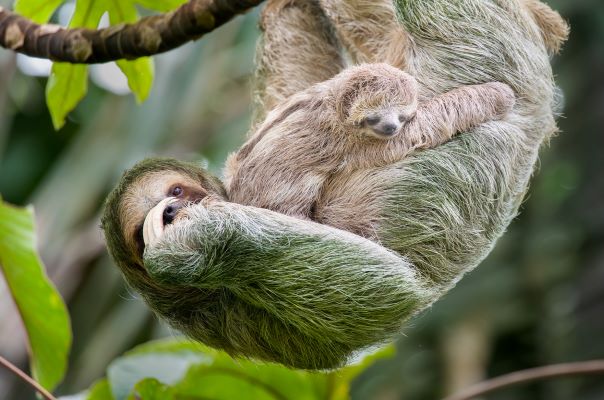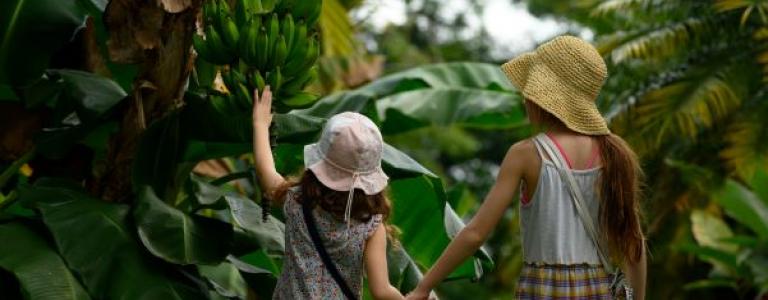How Costa Rica’s Environment Minister Talks to his Daughter About Climate Change
Do we need new, advanced technology to reduce carbon emissions? Carlos Manuel Rodríguez, Costa Rica’s Minister of Environment and Energy, says we already have the best “machine” for the job: Trees.
Do we need new, advanced technology to reduce carbon emissions? Carlos Manuel Rodríguez, Costa Rica’s Minister of Environment and Energy, says we already have the best “machine” for the job.
Speaking at the World Economic Forum’s Annual Meeting of the Global Future Councils in Dubai, Rodríguez described a conversation with his daughter about climate change – and how he told her nature has already given us one of the most important tools to tackle the crisis.
“One day I was having dinner with my kids in my house and my younger daughter said, ‘Dad, don’t worry about climate change. One day, a scientist will design a machine that can absorb all of that carbon that is in the atmosphere and we will be safe from climate change’,” he said in an interview.
“And I said to my daughter, ‘You know what? Nature invented that machine many, many millions of years ago. That machine,” he said, “is called a tree.”
Rodríguez continued, “So, if we stop tropical deforestation, or deforestation at the global level, we will use effectively that machine. That was the sign by nature probably 300 million years ago.”
Around the world, we’re losing 18.7 million acres of forest each year – or 27 soccer fields per minute. Deforestation not only causes a loss of natural habits and biodiversity, but also contributes to emissions as there are fewer trees to suck up the carbon. According to Global Forest Watch, if “tropical deforestation” were a country, it would rank #3 in carbon-equivalent emissions, behind China and the United States.
But Costa Rica shows us it’s possible to undo some of the damage.

In the 1940s, 75% of Costa Rica was covered by forest, primarily tropical rainforest. By 1983, following decades of deforestation, this dropped to 26%.
With major policy changes such as restricting logging permits, paying landowners who conserve their land, and attracting overseas investment in eco-tourism, Costa Rica has reversed the trend. Rodríguez explained that it has now doubled its forest cover, which covers more than half of the country and continues to grow as the government creates more national parks to preserve natural ecosystems, from highlands and cloud cover to mangroves and rainforests.
“Costa Rica has been very successful at understanding how we value nature and how we use nature as a driver for economic growth, particularly with eco-tourism,” he said.
And by tying the need to preserve biodiversity to the economy, Costa Rica has gotten citizens involved: “If nature becomes a driver for growth and the economy, economic development, people won't want to destroy nature. So, in a matter of a generation – over one generation – we went from people destroying the forest to produce food, particularly livestock, to protecting nature, restoring nature and using it as a way to bring tourists to the farms and the parks. And that has been tremendously successful.”
Costa Rica’s not stopping there. The country has committed to be fully decarbonized by 2050 and will present a national climate action plan to UN Climate Change by 2020. The plan will include measures for transportation, infrastructure, energy, agriculture, waste management and forest management – including increasing forest cover to 60% by 2030.
Rodríguez thinks they can get there.
“I'm a rational optimistic because I know we've got the resources. It is not lack of financial resources. And we've got the technology. We know what we need to do.”
And what we need to do, as he told his daughter, is protect and grow nature's most precious carbon-fighting machines: trees.
This article originally appeared on the World Economic Forum website; it has been reprinted with permission.
You might also be interested in
CSDDD: EU's Due diligence law vote should drive supply chain sustainability efforts
The European Parliament has voted to adopt the Corporate Sustainability Due Diligence Directive, aiming to address the environmental and social impacts of the supply chains of Europe's large corporations.
Ecuador Referendum Rules Out ISDS Return, Underlining Public Support for a Sustainable Path
Ecuador has voted to allow international arbitration and investor–state dispute settlement (ISDS) in its treaties and agreements. But the risks that initially made them turn away from this outdated model remain.
Brochure: IISD’s Sustainable Investment Advisory Services
IISD's Sustainable Investment team provides customized training, workshops, and advice to developing countries across the world.
Can China Contribute to Climate Action in Latin America?
Sisi Tang discusses three climate action initiatives between China and Latin America: a crediting mechanism for clean energy, debt-for-climate swaps, and a greener free trade agreement.
